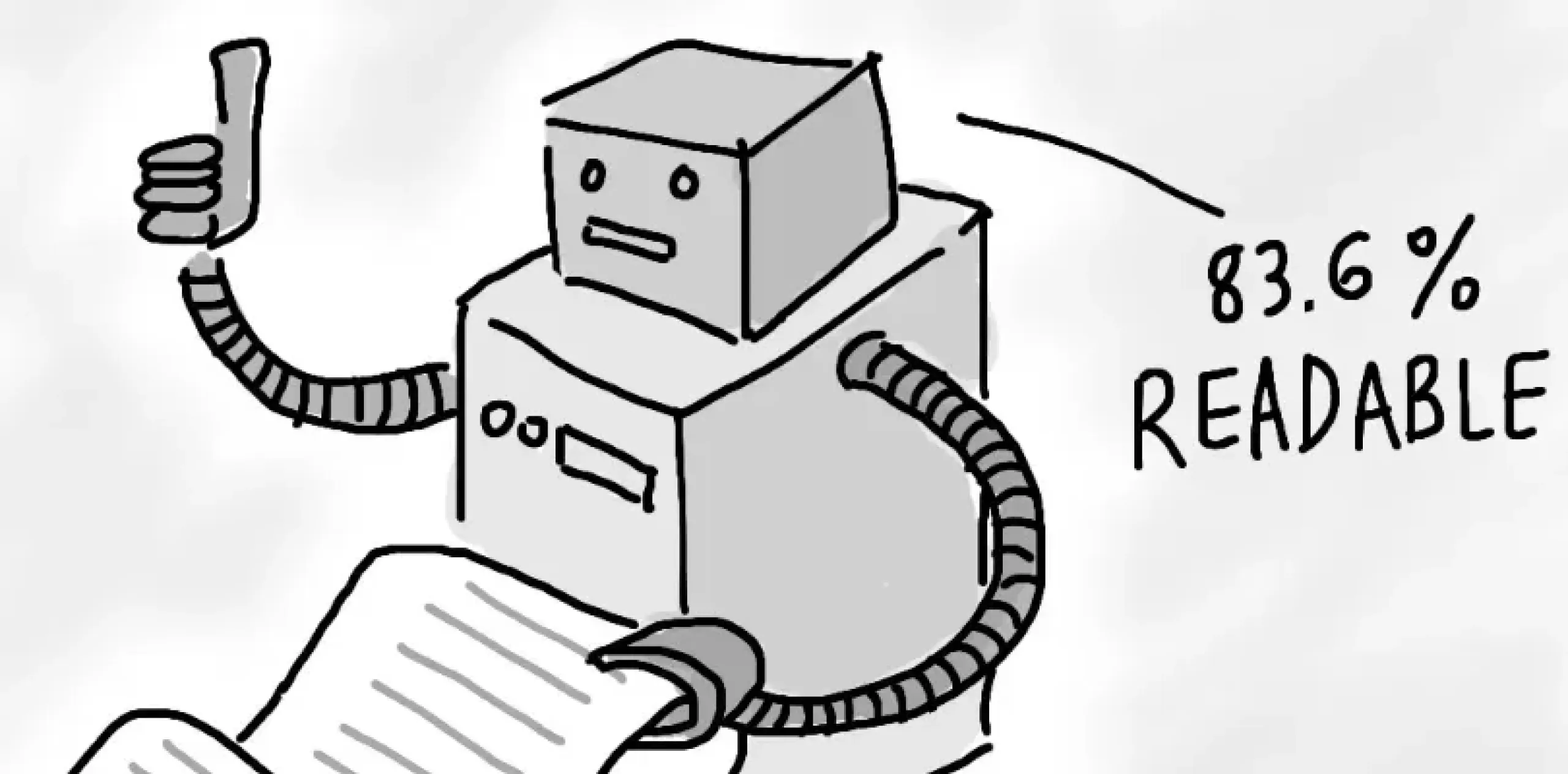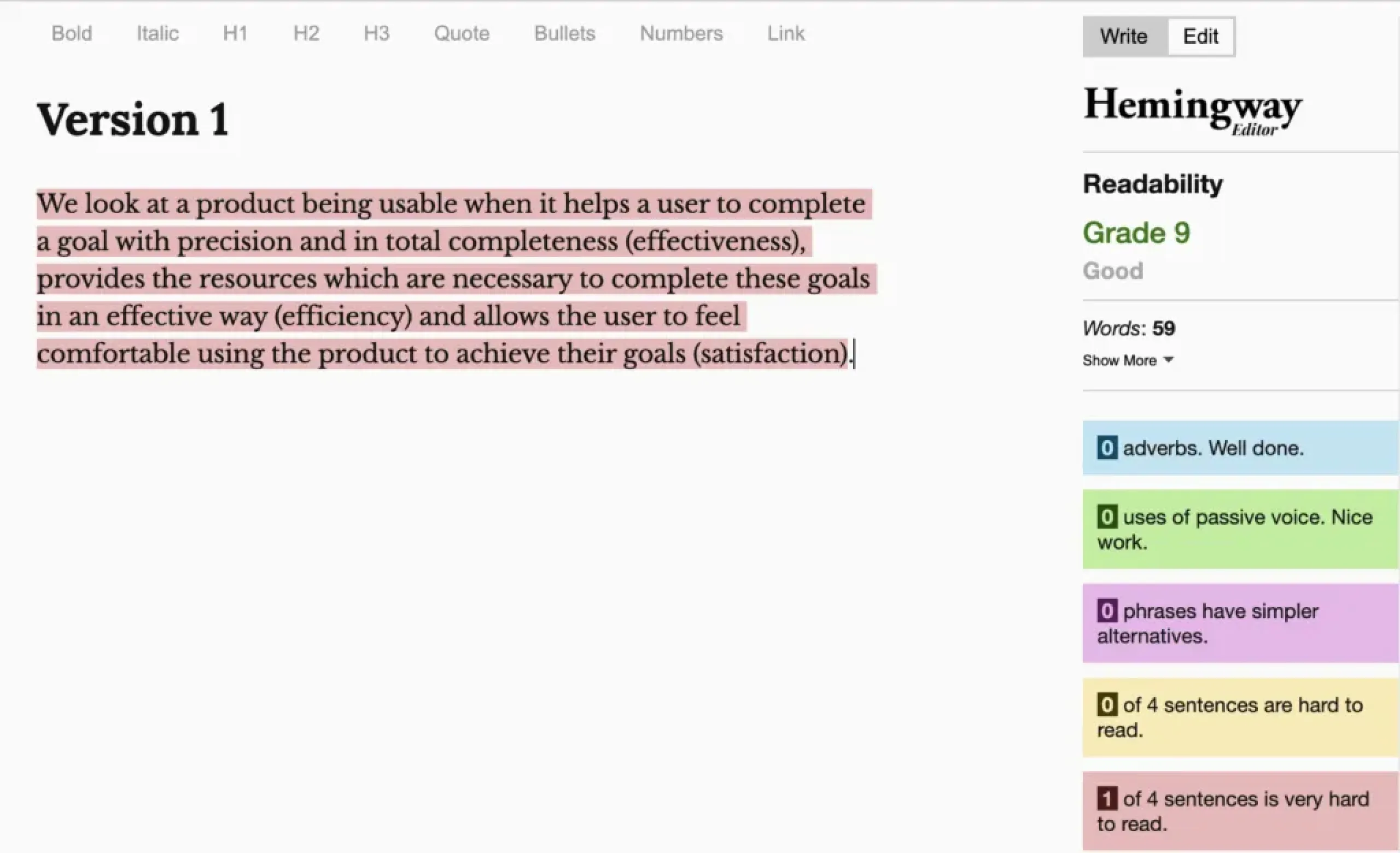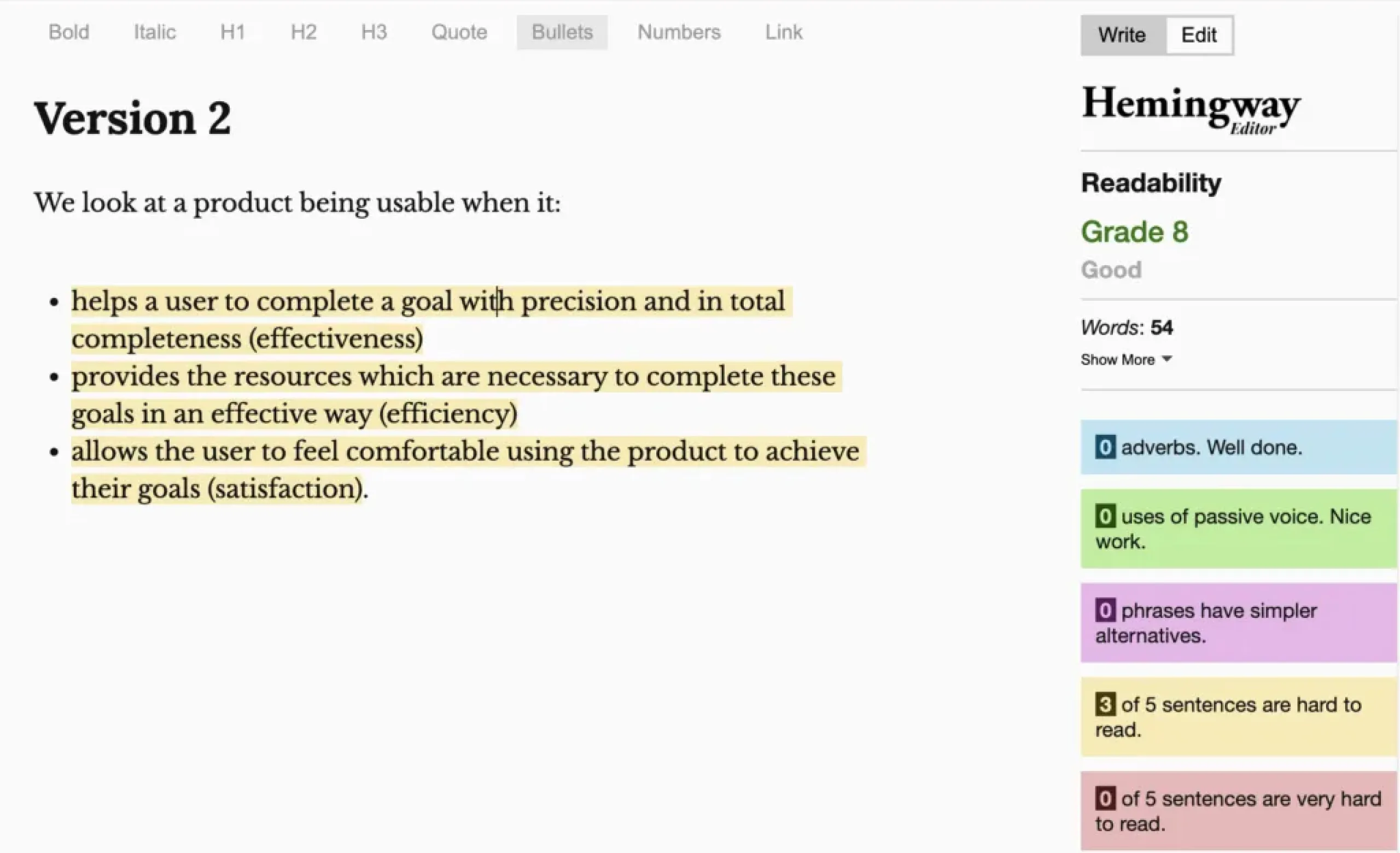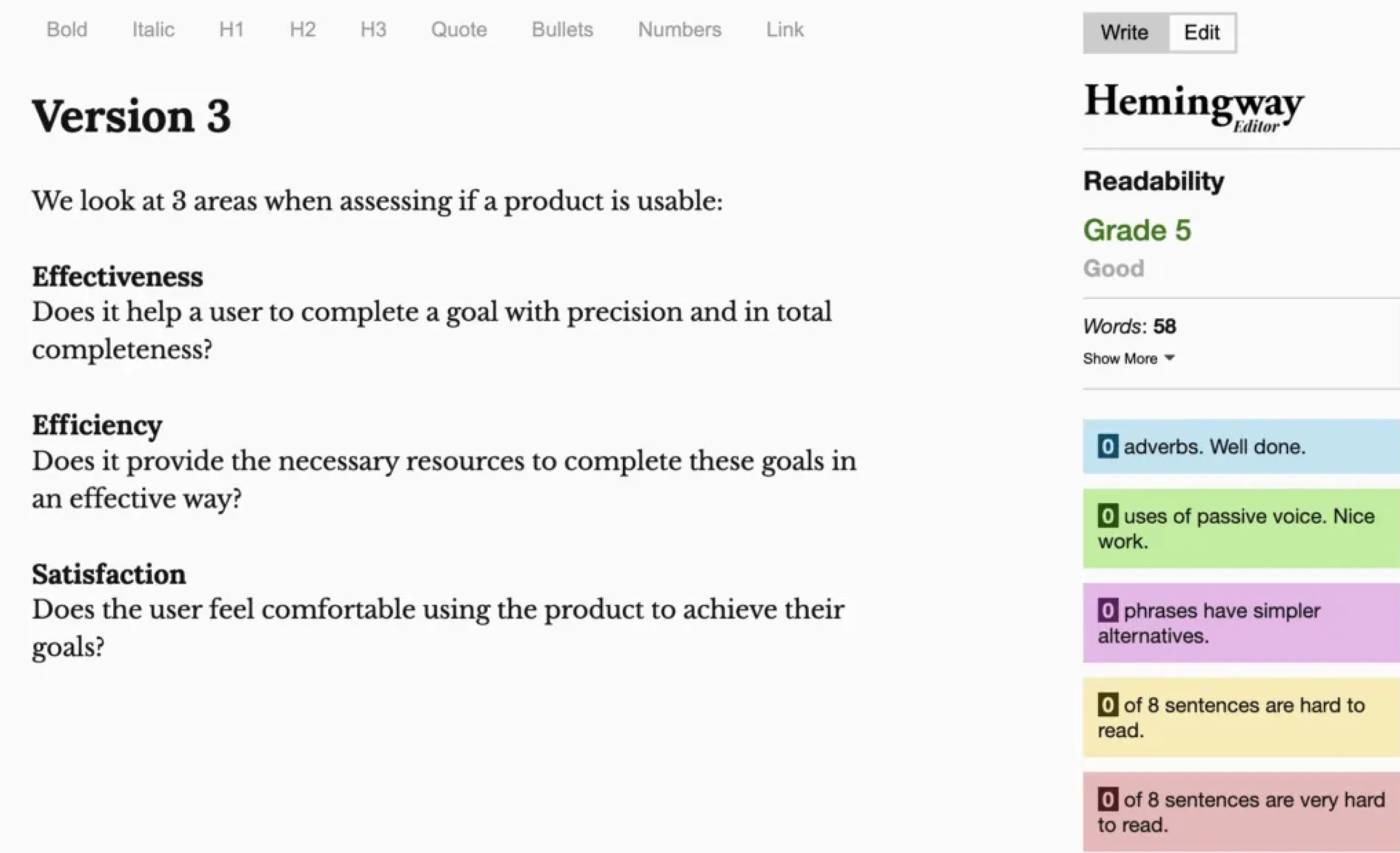Words are powerful. But did you know there’s a method for structuring words that is clearer, more understandable, and more accessible? Powerful stuff indeed.

Image source unknown
I have a question for you.
Do you use words as part of your job?
It’s not a trick question. I’m guessing the answer is yes. (Unless your job title is ‘mime’, in which case… carry on.)
I’d like to share some content design trade secrets with you that will make your words more powerful.
It’s called plain language (or plain English), and you should be using it everywhere.
What is plain language?
Plain language is writing that helps people to:
- find what they need
- understand it
- use it.
Put simply, it’s a bit like Marie Kondo-ing your sentences.
Everything that goes in should add value. Anything unnecessary gets cut.
It’s not rocket science, but it is a different style of writing to what most of us are used to. (That goes for experienced writers, too – we’re often the worst culprits for complex words!)
Word structure and readability
There’s a common myth about plain language that it involves dumbing down your writing.
And it’s not true at all! Plain language has far more to do with the structure of content than its substance.
Take a look at the following examples. The words used are almost exactly the same, but by structuring the content in different ways we can improve the readability.

In version 1, all text is in a single sentence. When put into a readability tool ( Hemingway Editor ), it is highlighted in red as ‘very hard to read’. The readability score is grade 9.

In version 2, the words are all the same, but each phrase is now a bullet point. The readability score is grade 8.

In version 3, each bullet point has been turned into a sentence with a sub-header. A few words have been altered. The readability score is grade 5.
I’m not going to go in depth about reading grade here, because readability scoring is complex and a blog topic in itself.
The point I want to underscore is this:
When showed these examples, most people agree that version 3 is the easiest to read.
Yet it’s saying almost exactly the same thing as the version that was scored ‘very hard to read’.
Spending 5 minutes using a tool like Hemingway can make a huge difference to the readability of your writing – even if you change few or no words.
Why use plain language?
Right now you might be thinking, “That’s lovely, I’ll do that if I have time.”
Or maybe you’re thinking, “My audience is highly literate – they don’t need plain language writing.”
Allow me to make the case for why you should use plain language everywhere, for all audiences.
Plain language is accessible language
Did you know that 44% of adults in Australia do not have the literacy skills needed for everyday life?
According to ABS statistics , 8.7 million Australian adults have low reading literacy (a reading level of 1-2).
That’s a staggering number of people for whom reading complex words and sentences can present a huge barrier to carrying out daily tasks.
Plain language is accessible for people with low reading literacy for a few reasons.
One of those is to do with how the brain processes words.
Word shape recognition
By the time children are 9, they have a basic vocabulary of about 5,000 words in place.
They read these common words by recognising their shape, not reading them letter-by-letter. And according to GOV.UK , adults still find these words easier to recognise and understand than words they’ve learned since.
When we’re writing in plain language, we’re often striving to use the simplest version of a word.
“Use” instead of “utilise”.
“More” instead of “additional”.
We’re doing this to make the most of word shape recognition, because these words are quicker to read and easier to understand.
Plain language for expert audiences
It’s not just people with low reading literacy that benefit from plain language.
Highly literate people prefer it too.
Research shows that higher literacy people prefer plain English because it allows them to understand the information as quickly as possible.
In fact, the more educated the person and the more specialist their knowledge, the greater the preference for plain language.
And it makes sense when you think about it!
Think about the classic ‘executive summary’. You’ve probably read or written at least one in your working life.
These often exist within business cases or reports as a high level overview, designed to help time-poor CEOs or senior managers stay informed and make decisions.
The clearer your executive summary is to read, the less time they need to spend with it.
The simpler it is to understand, the more likely it is they will retain that knowledge and make the right decision as a result.
Think about who your ‘CEO’ is when writing for expert audiences.
You can influence their time, their understanding and their actions with plain language.
10 plain language tips
Ok – I’ve told you the what and the why, now onto the how!
Here are my top tips for plain language writing.
1. Make it scannable
People don’t read on the web – they scan in an F-shaped pattern.
To help people scan your writing, use:
- headers and subheaders
- bullets and numbered lists
- short sentences (15-20 words average)
- short paragraphs (2-3 sentences average)
2. Most important info goes first
This is journalism 101 – the inverted news pyramid applies to plain language too!
If you’re stuck on what information to put first, start with the What/Why/Who.
The other thing that can be helpful is to explain your key points to someone else. How we explain things when we’re talking is often plain language!
3. Use consistent styling and patterns
In the Version 3 Hemingway example above, one of the reasons it’s easy to read is because it has a consistent structure which supports scanning.
One tip here is to be careful of how you use bold and italics in your text. Bolding text can be a good way of bringing attention to important information, but it can also disrupt eye scanning because our eyes treat it like another header.
4. Use active voice
Active voice is language that’s in the present tense, and puts the subject of the sentence first.
This is active voice:
The quick brown fox (subject)
jumps over (present tense verb)
the lazy dog (object)
This is passive voice:
The quick brown fox (subject)
was jumped over by (past tense verb)
the lazy dog (object)
Notice how passive voice uses more words?
How to know if you’re writing in active voice:
- If you’re starting sentences with words like “You/your” or “We/our”, you’re probably starting with the subject.
- Avoid writing in the past tense – so words that end in -ed.
5. Use the simplest version of a word or phrase
Look for words with 3 or more syllables. Destroy them.
In most cases the meaning won’t change if you use a simpler alternative.
The Australian Government Style Manual has a really useful list of plain language words.
6. Explain jargon and expand acronyms
If you do have to use a complex word – that’s fine! Just be sure to explain it.
That goes for acronyms too. Don’t assume that just because WWDPD is obvious to you, everyone will automatically understand it to mean What Would Dolly Parton Do.
7. Use sentence case
For plain language writing, most of the time you should be using sentence case.
That’s because the human eye can read sentence case more quickly and easily than title case or capital letters.
Remember what I said about how children learn to read by recognising word shape, not letters? This is why!
8. Use minimal punctuation
If these punctuation marks appear in your writing, it’s a plain language red flag:
& – ; / * …
They’re usually indicators of long or complex sentences.
9. Use a readability tool
Hemingway Editor is the one I used in the example above – it’s free! I recommend you check it out if you haven’t used it before.
There’s also loads of readability extensions you can get for Google Chrome like Outwrite, which is also free.
Hemingway and Outwrite both come with premium AI features which can review your writing and make suggested improvements. Which brings me to my final tip.
10. Use AI
AI tools like Chat GPT can be a useful tool to check your writing.
For example, you could give it the prompt: “Rewrite this sample using plain language principles. It should be reading grade 8 and be optimised for web scanning.”
See what comes back, then refine your prompts from there.
A word of caution! At the moment, the writing skills of Chat GPT are still fairly limited, particularly around tone of voice.
I encourage you to give it a go though and see what ideas it sparks!
